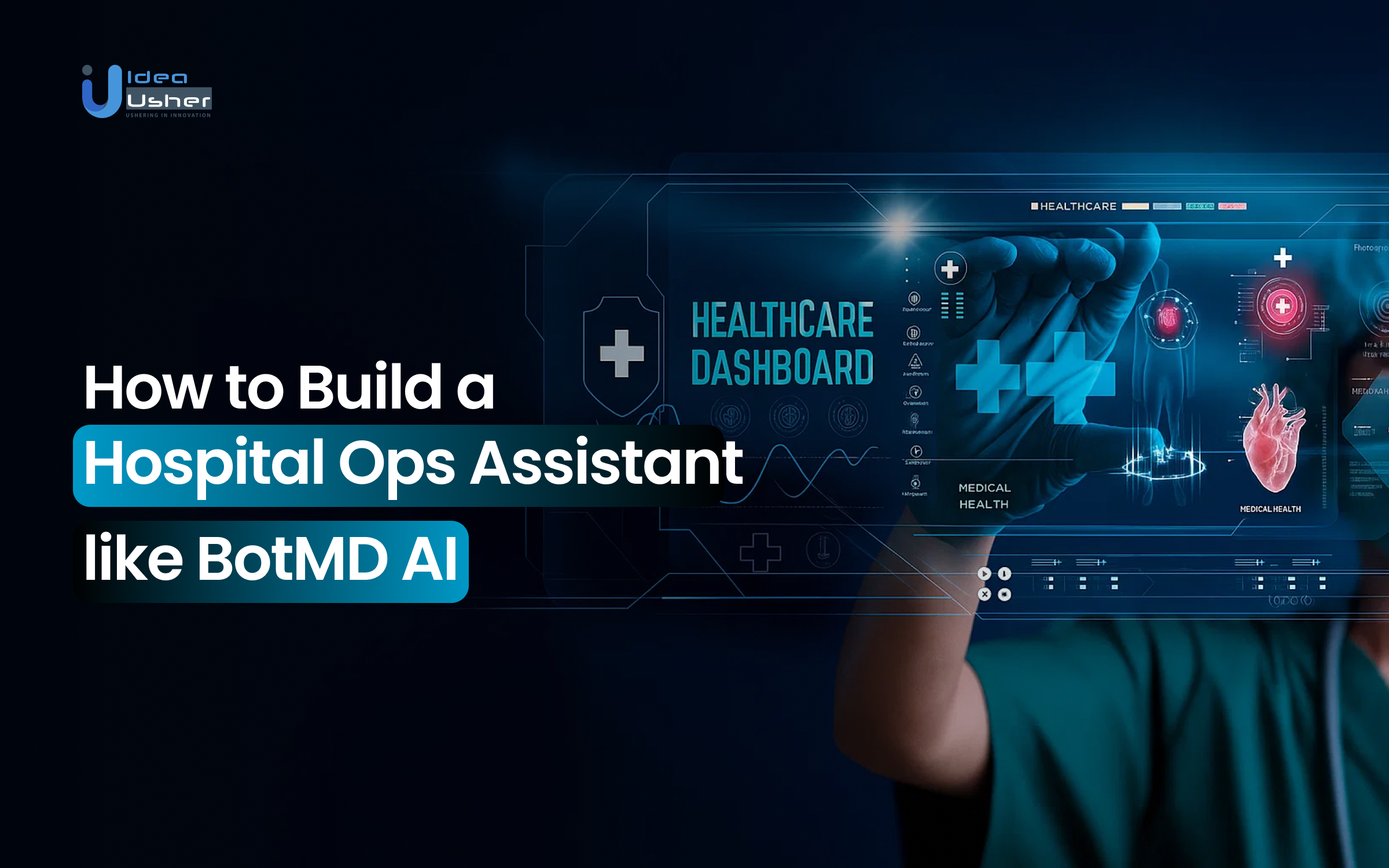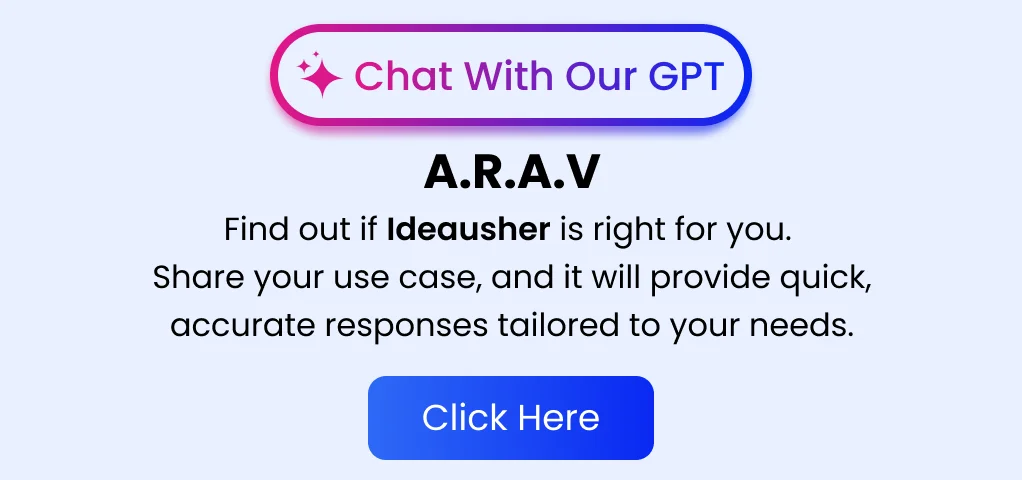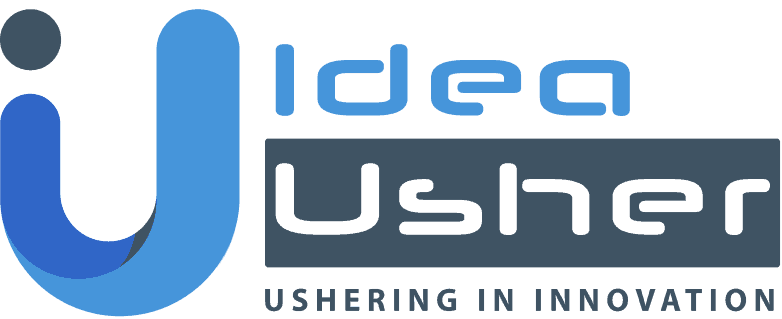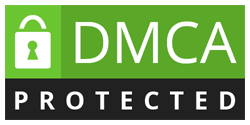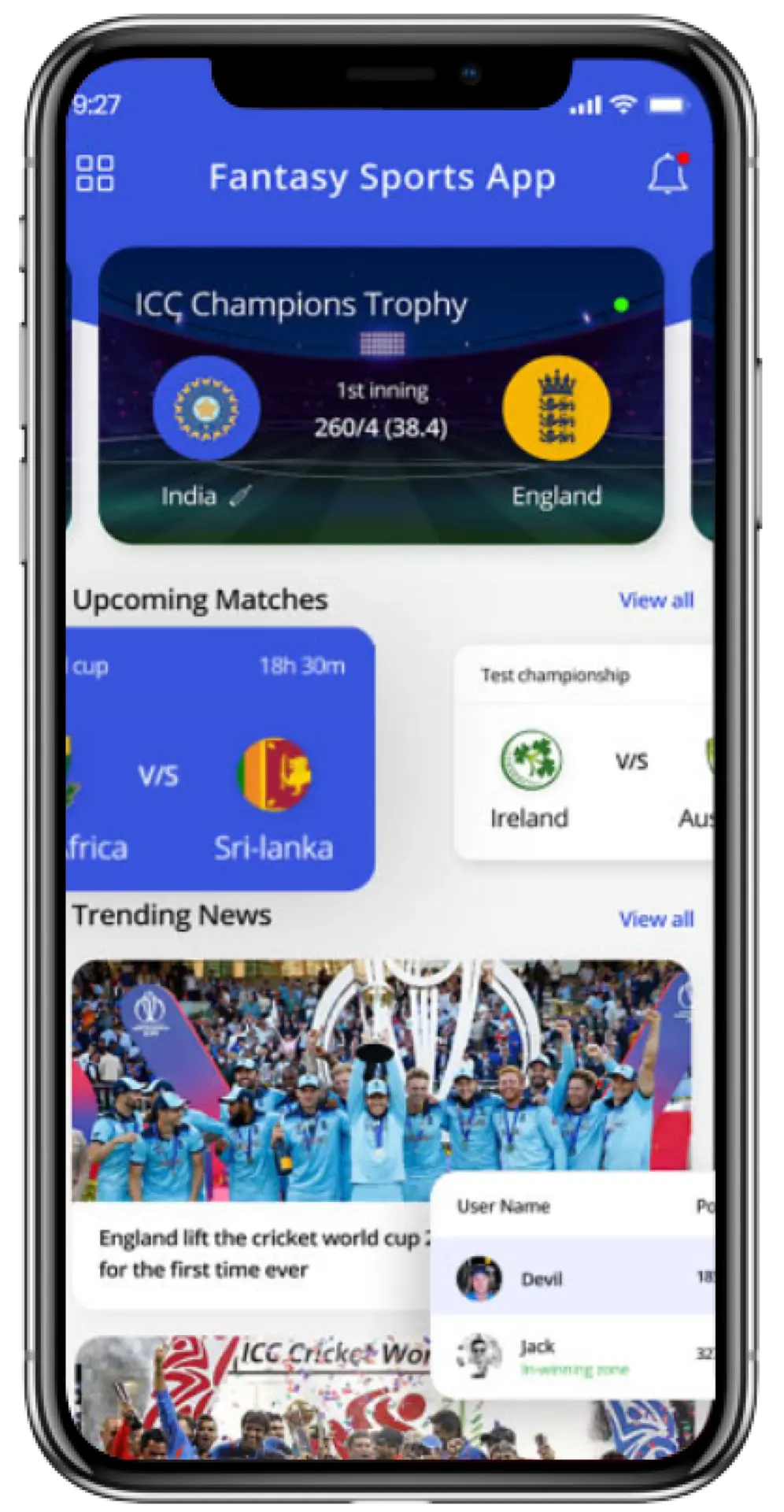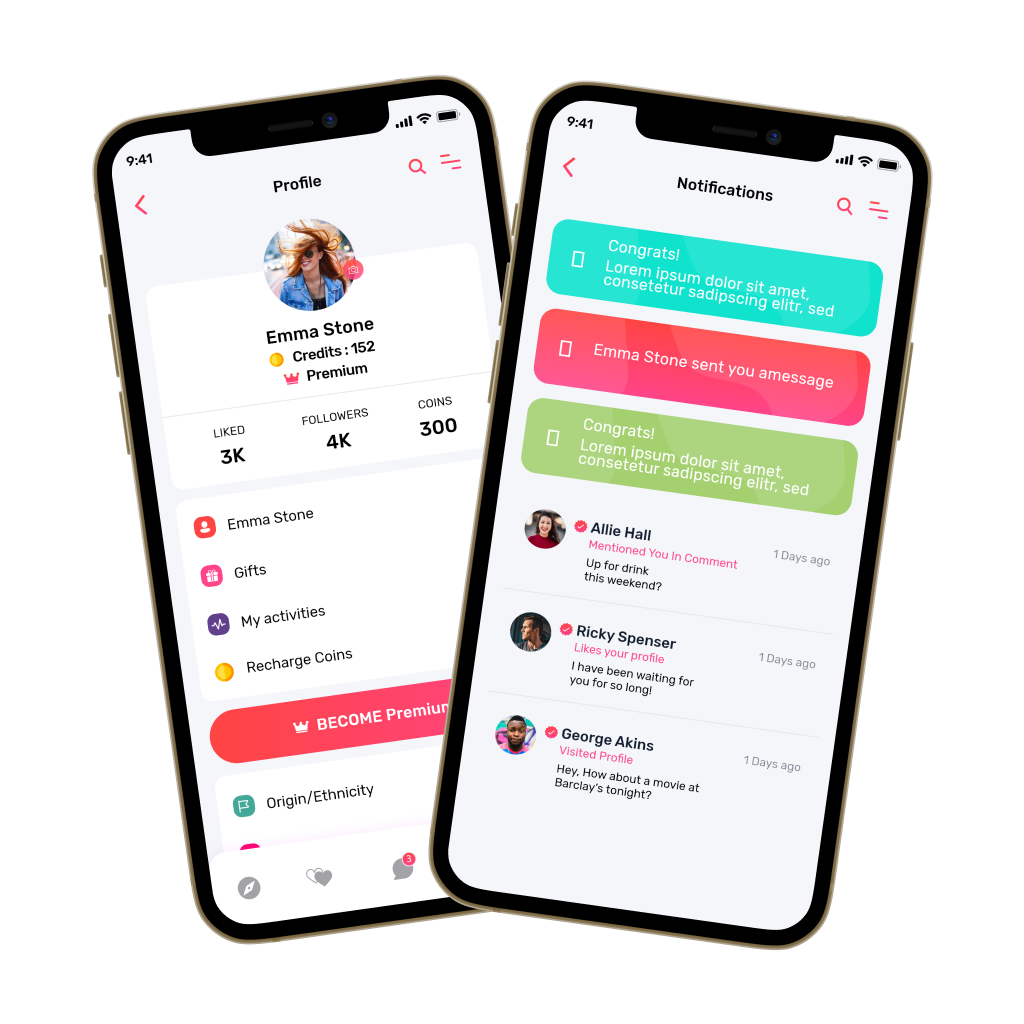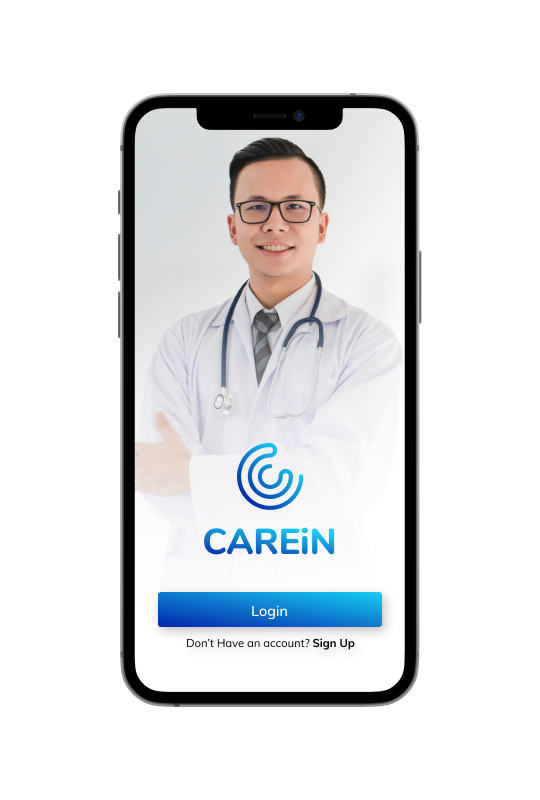In 2025, AI is making a real difference in hospitals, but not in the way you might think. Instead of robots taking over, it’s tools like BotMD that are helping healthcare professionals manage their day-to-day tasks. These intelligent assistants help reduce the mountain of administrative work, so doctors and nurses have more time to focus on what matters most, caring for patients.
It’s not about replacing people; it’s about making their lives easier and improving the quality of care for everyone.
We understand how crucial it is for healthcare systems to embrace AI to make smarter decisions, cut down on unnecessary tasks, and make better use of resources. IdeaUsher has already worked with several healthcare organizations to create solutions like BotMD, which enhance hospital efficiency by automating patient intake, real-time updates, and inventory management. Through this blog, we aim to share our insights with you, showing you how to get started on integrating these AI-driven assistants into your own healthcare platform.
Key Market Takeaways for AI Hospital Ops Assistants
According to MediaMarketUS, the global Medical Virtual Assistant Market is experiencing rapid growth, projected to jump from $0.5 billion in 2023 to $5.9 billion by 2033, with a 28.1% CAGR. This growth reflects the rising demand for AI-powered hospital operations assistants that improve communication, streamline workflows, and enhance patient engagement across healthcare settings.
Source: MediaMarketUS
AI hospital operations assistants are becoming increasingly popular due to their ability to automate tasks like appointment scheduling, symptom checking, EHR integration, and medication reminders. These tools reduce administrative workloads for healthcare providers, leading to better patient outcomes. For instance, Oracle’s Clinical Digital Assistant helps reduce charting time by 40%, while IBM Watson’s assistant aids hospital staff with HR-related tasks.
Recent partnerships and advancements highlight the momentum in this space. The East and North Hertfordshire NHS Trust’s adoption of IBM Watson-powered AI assistants shows growing confidence in these technologies. Additionally, Openstream.ai’s development of multimodal AI digital twin technology provides virtual healthcare interactions that simulate expert clinician knowledge, showcasing the diverse applications of AI in both clinical and operational support.
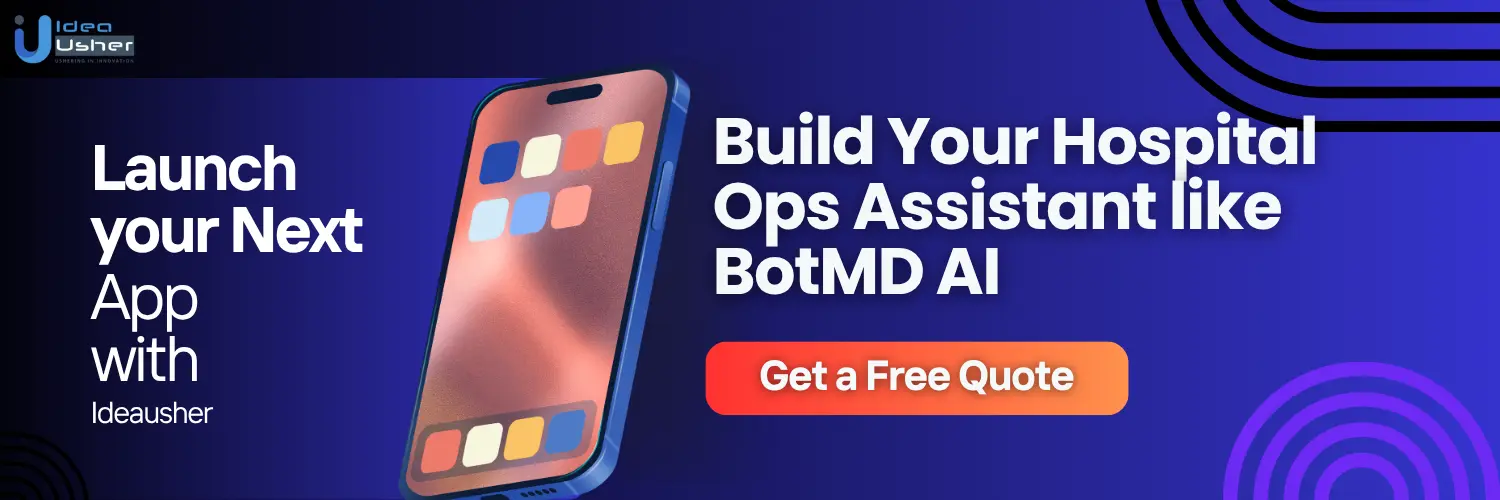
What is BotMD AI Hospital Ops Assistant?
BotMD AI is a virtual assistant designed to revolutionize hospital operations. By streamlining clinical workflows, automating administrative tasks, and enhancing patient engagement, it leverages AI to provide dynamic support for healthcare teams. Unlike traditional bots, BotMD utilizes advanced Natural Language Processing to comprehend complex medical queries and tailor its responses to specific healthcare needs.
Key Capabilities:
- Clinical Communication: Facilitates secure, real-time messaging between doctors, nurses, and patients, improving collaboration across care teams.
- Smart Scheduling: Automates appointment booking and rescheduling while reducing no-shows using AI-powered algorithms.
- Automated Patient Reminders: Sends reminders for medication, pre-operation instructions, and follow-up appointments via common communication channels like WhatsApp and SMS, making it easy for patients to stay engaged.
- Inpatient Discharge Automation: Helps guide patients through their post-discharge care plans, reducing the likelihood of readmissions by providing clear instructions and follow-ups.
Conversational AI vs. Static Bots
Most hospital chatbots follow fixed scripts that limit their ability to adapt to complex medical queries. BotMD stands out by using NLP technology that allows the AI to:
- Understand medical jargon (e.g., “Does amoxicillin interact with warfarin?”).
- Handle multilingual inquiries, which is crucial in diverse patient populations.
- Provide context-aware responses (e.g., a patient asking, “What time is my MRI?” after booking it).
This dynamic approach to communication sets BotMD apart, offering a more natural, human-like interaction with patients and healthcare teams.
How Does the AI Work in BotMD?
BotMD’s AI is powered by machine learning and deep integrations with hospital systems, making it an intelligent assistant that offers real-time, actionable insights. Here’s how it operates:
1. EHR/EMR Integration:
Integrates seamlessly with electronic health records (EHR) like Epic and Cerner to provide context-specific information. For example, if a nurse asks about a patient’s recent test results, the AI can instantly provide the answer based on the latest available records.
2. Workflow Automation
Handles repetitive tasks, such as checking prior authorizations for prescriptions and drafting clinical notes based on conversations between doctors and patients.
3. Smart Triage & Routing
Uses NLP to classify and route patient messages appropriately. For example, if a patient mentions “chest pain,” the system will immediately alert the emergency room, while a simple “refill request” will be sent to the pharmacy.
4. Predictive Analytics
Utilizes data to identify patients at risk of complications. For example, it can flag diabetic patients with irregular glucose trends and alert the healthcare team for early intervention.
Real-World Scenario:
- A patient sends a message saying, “My incision is red and swollen.”
- BotMD’s NLP system detects the urgency and routes the message to the surgeon while pulling up the patient’s recent medical records to ensure relevant information is at hand. Simultaneously, the system sends automated after-care instructions to the patient, helping to manage their care efficiently.
Why Hospitals Are Turning to AI Assistants in 2025?
Healthcare businesses are turning to hospital ops assistants like BotMD AI to streamline operations, cut costs, and free up staff for more meaningful patient care. It’s a smart move to improve efficiency, reduce burnout, and stay competitive in today’s fast-paced healthcare world.
Operational Efficiency & Cost Savings
Healthcare businesses are using BotMD AI to reduce administrative tasks by up to 50%, allowing staff to focus on more critical aspects of patient care. The AI also sends automated reminders, cutting no-show rates by over 25%, and predicts busy ER times to help with smarter staffing and resource management.
Doctor Productivity & Burnout Reduction
Physician burnout is a growing concern, and BotMD AI helps by automating tasks like documentation and responding to basic queries. This saves doctors more than 5 hours a week, helping them focus on patients and reducing the stress that leads to burnout.
Compliance & Security
BotMD AI meets HIPAA and GDPR standards, ensuring patient data is secure with encryption and strict access controls. It also provides transparency with Explainable AI (XAI), so healthcare teams can understand how the system makes its decisions.
Competitive Edge for Hospitals
Hospitals using BotMD AI respond to patients faster, improving satisfaction and boosting HCAHPS scores. Additionally, the system attracts both tech-savvy patients and skilled professionals, helping hospitals maintain a competitive edge in the digital healthcare space.
Benefits of AI Assistants like BotMD for Hospitals
Building a hospital ops assistant like BotMD helps streamline workflows, saving time and reducing errors across the board. It also improves patient satisfaction with faster responses and better care, giving hospitals a competitive edge.
Technical Benefits
1. Automates Repetitive Workflows
A hospital ops assistant like BotMD AI automates time-consuming tasks, allowing healthcare teams to focus on higher-priority responsibilities. Routine processes such as appointment scheduling, patient reminders, and data entry are streamlined, improving overall efficiency.
2. Seamless Integration with Multiple APIs
BotMD AI easily integrates with a variety of systems, including WhatsApp, SMS, and Electronic Medical Records. This ensures smooth communication across platforms, making it simpler for staff and patients to interact without switching between multiple tools.
3. Scalable Cloud-Based AI Architecture
With a cloud-based architecture, BotMD AI can grow with a hospital’s needs. The system is highly scalable, allowing it to handle increasing patient volumes and complex workflows without compromising performance.
4. NLU for Accurate Intent Resolution
BotMD AI uses NLU to understand the intent behind patient inquiries. This leads to accurate and context-aware responses, making interactions smoother and more helpful for both patients and healthcare staff.
Business Benefits
1. Faster Responses & Fewer Drop-Offs
By automating communication and providing instant responses, BotMD AI reduces wait times and minimizes patient drop-offs. This leads to quicker resolutions, improving patient engagement and ensuring that no patient is left waiting.
2. Improved Patient Experience
With efficient, AI-driven assistance, patients receive prompt, personalized attention. This enhances their overall experience, leading to higher satisfaction scores and improved relationships with healthcare providers.
3. Lower Costs & Fewer Errors
Automation reduces the need for manual interventions, which lowers operating costs and minimizes human errors. This not only boosts efficiency but also ensures that the hospital delivers a higher standard of care without escalating expenses.
4. Enhances Hospital Brand
Adopting AI-powered tools like BotMD demonstrates a hospital’s commitment to innovation in patient care. It strengthens the hospital’s brand, attracting patients and top talent who value advanced, tech-driven solutions in healthcare.
Features to Include in a Hospital Ops Assistant like BotMD AI
After working on numerous Hospital Ops Assistants, we’ve learned which features really stand out and make a difference for hospital staff. These are the tools that save time, reduce stress, and ultimately improve patient care. Here are the features that have been a hit with users:
1. Predictive Patient Flow
Hospital administrators and charge nurses love using the AI dashboard that predicts patient admissions, discharges, and transfers well in advance. This helps them manage bed availability and operating room schedules more effectively, preventing overcrowding and ensuring resources are properly allocated.
2. Clinical Documentation & Scribing
Doctors and nurses appreciate how the AI listens to their conversations with patients and automatically updates the EHR with accurate notes. It saves a lot of time that would otherwise go into manual data entry, allowing staff to focus more on patient care and less on paperwork.
3. AI Workflow Coach & Knowledge Base
Staff love being able to ask the AI specific questions about hospital procedures, treatment plans, or billing systems, and get accurate, hospital-specific answers in real time. The AI also helps staff stay up-to-date with personalized training and ensures they always have the right information on hand.
4. Predictive Staffing & Workload Balancing
Nurse managers and HR teams rely on AI to forecast staffing needs ahead of time. The AI looks at patient acuity, historical trends, and external factors (like flu season) to recommend optimal staffing levels, which helps prevent burnout and ensures that the hospital is always prepared for any changes in patient demand.
5. Voice-Activated Commands & Task Execution
Clinicians, especially in high-stakes environments like the OR, use voice commands to interact with the AI, freeing up their hands to focus on patient care. Tasks like ordering tests or pulling up patient records can be done without touching a device, which helps maintain a sterile environment and improves efficiency.
6. Research & Clinical Trial Matching
Researchers and clinicians benefit from the AI’s ability to quickly match patients with relevant clinical trials or research papers. This feature speeds up the process of connecting patients to the latest treatments and accelerates the development of new medical discoveries.
7. Secure Messaging & Handoffs
Clinicians are finding it easier to communicate during shift changes, thanks to the AI’s ability to understand and enrich messages with relevant patient data. When a nurse hands off a patient to the next shift, the AI ensures that the message includes all the critical information, improving communication and patient safety.
8. Appointment Optimization
Schedulers love how the AI predicts no-shows and adjusts the appointment schedule accordingly. It helps optimize the hospital’s time, reducing wasted slots and ensuring that resources are used as efficiently as possible.
9. Adaptive Reminders
Care teams appreciate the AI’s ability to adapt reminders based on patient behavior. If a patient is more likely to miss a medication dose, the AI adjusts the frequency of reminders and provides staff with insights, enabling them to intervene when necessary and improve patient adherence.
10. AI-Generated Discharge Summaries
Doctors and nurses are saving time with AI-generated discharge summaries that are easy to review and approve. The AI pulls key details from the patient’s stay, creating a clear, patient-friendly summary and care plan that improves communication with patients and their follow-up care providers.
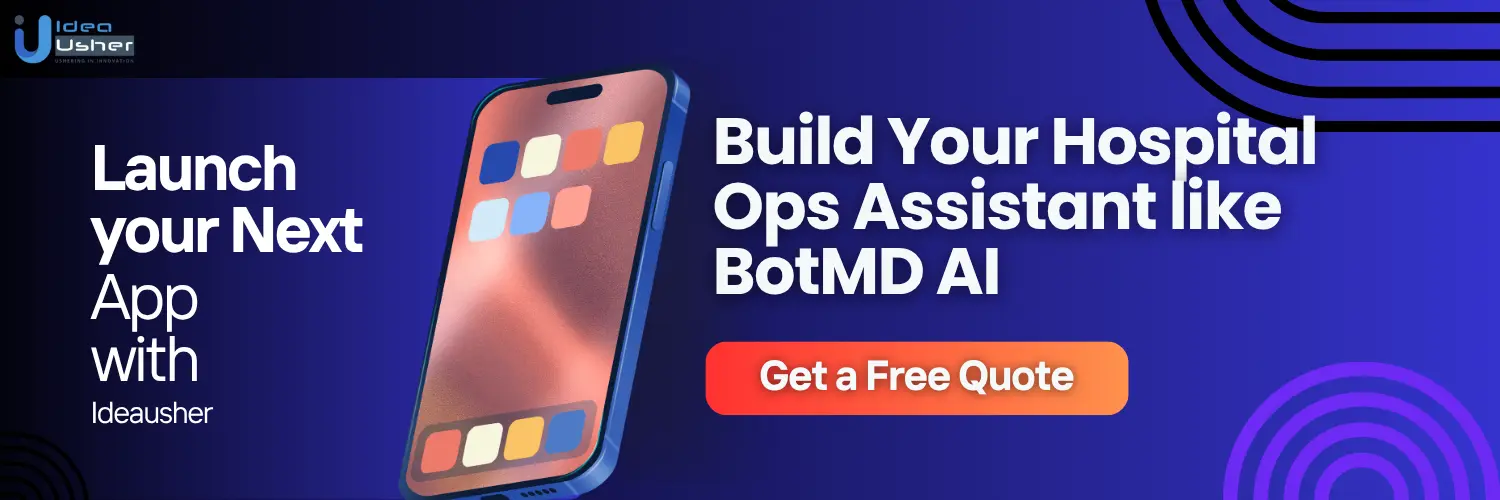
How to Build a BotMD-like Hospital Ops Assistant?
When developing a BotMD-like hospital ops assistant for our clients, we follow a structured approach to create a solution tailored to their needs. Our focus is on streamlining operations, improving communication, and enhancing patient care through advanced AI technologies. Here’s how we build a custom solution:
1. Define Key Hospital Operations to Automate
We begin by collaborating with our clients to identify repetitive tasks and operational gaps that can be automated, such as discharge summaries, referrals, and on-call rosters. This helps us focus on the most impactful areas to boost efficiency.
2. Design Conversational AI Flows
Next, we design intuitive AI workflows using Natural Language Processing (NLP) engines to structure responses for common queries like admission, discharge, and scheduling. We also ensure that the assistant is multilingual, enabling it to serve a diverse patient base effectively.
3. Integrate with Internal Hospital Systems
We then connect the AI assistant with the hospital’s existing systems, such as Electronic Medical Records, Human Resource Management, Radiology, and Lab Information Systems. This integration ensures real-time data sync and secure access to critical information across departments.
4. Develop Messaging Layer and Channels
We configure the messaging channels, including WhatsApp, Telegram, or in-app chatbots, to facilitate seamless communication. Additionally, we set up escalation flows to human agents for complex cases, ensuring that no patient query goes unanswered.
5. Ensure Compliance & Secure Deployment
Security is a top priority, so we implement robust data encryption and ensure compliance with healthcare regulations like HIPAA. We deploy the solution securely on cloud infrastructure (AWS or Azure), ensuring that it meets local data residency requirements where necessary.
6. Test, Train, and Launch Iteratively
We conduct rigorous testing using real-world hospital scenarios to fine-tune the AI assistant’s intent models. The solution is launched in phases, starting with key departments such as the Emergency Department or Intensive Care Unit to ensure a smooth rollout with minimal disruption to existing operations.
Common Challenges in Building an AI Hospital Ops Assistant
After working with numerous clients, we’ve learned the challenges that often come up when implementing a hospital ops assistant, and we’ve developed effective ways to tackle them. Here’s how we address the most common issues:
1. Data Privacy & Compliance: Keeping Patient Data Secure
When working with sensitive patient data, we know compliance is non-negotiable. AI must meet strict regulations like HIPAA and GDPR to avoid serious consequences like fines or data breaches.
How We Handle It:
- End-to-End Encryption: We ensure that all data is encrypted both in transit and at rest, using the highest standards like AES-256.
- Granular Access Controls: Only authorized personnel get access to patient records, and we set up clear role-based permissions.
- Audit Logs & Anonymization: Every AI interaction is tracked, and we anonymize data to protect patient privacy.
- Compliance-First Architecture: We deploy AI solutions on cloud providers that are HIPAA-certified, ensuring we meet all compliance standards.
2. Resistance to Change by Hospital Staff
Doctors and nurses can be hesitant about adopting AI, often fearing job loss or disruptions to their workflows.
How We Handle It:
- Co-Design with Clinicians: We work closely with healthcare staff to design AI workflows that address their pain points, like reducing time spent on documentation.
- Pilot Programs: We start small, testing AI in one department first, like cardiology, to show its value before scaling.
- Gamified Training: Short tutorials and quizzes make it easier for staff to adopt the new system.
- Human-AI Collaboration: We make sure staff see AI as a helpful assistant, not a replacement (e.g., “AI drafts notes; you approve them”).
3. Integration Complexity with Legacy Systems
Many hospitals still use outdated EMRs with poor API capabilities, making integration with AI systems difficult and costly.
How We Handle It:
- HL7/FHIR Standards: We use industry-standard protocols to ensure smooth integration with legacy EMRs.
- Middleware Bridges: We deploy tools like Redox or Mirth Connect to link old systems with new AI solutions.
- Phased Rollout: We break the process down, starting with simple modules like scheduling or clinical notes before moving to more complex features.
- Low-Code Customization: We give hospitals the ability to tweak workflows without needing an IT team by using drag-and-drop customization tools.
4. Language & Context Understanding
AI can struggle with regional dialects, medical abbreviations, and complex queries specific to healthcare.
How We Handle It:
- Localized NLP Training: We fine-tune models based on regional hospital data to improve language understanding (e.g., Singaporean discharge notes).
- Clinician Feedback Loops: Doctors can flag errors, helping us continuously improve the system’s accuracy.
- Hybrid Human-AI Model: When the AI isn’t sure, we escalate to a human staff member, like a pharmacist, for more accurate answers.
- Medical Knowledge Graphs: We build comprehensive databases that link drugs, conditions, and guidelines to help AI understand complex medical queries.
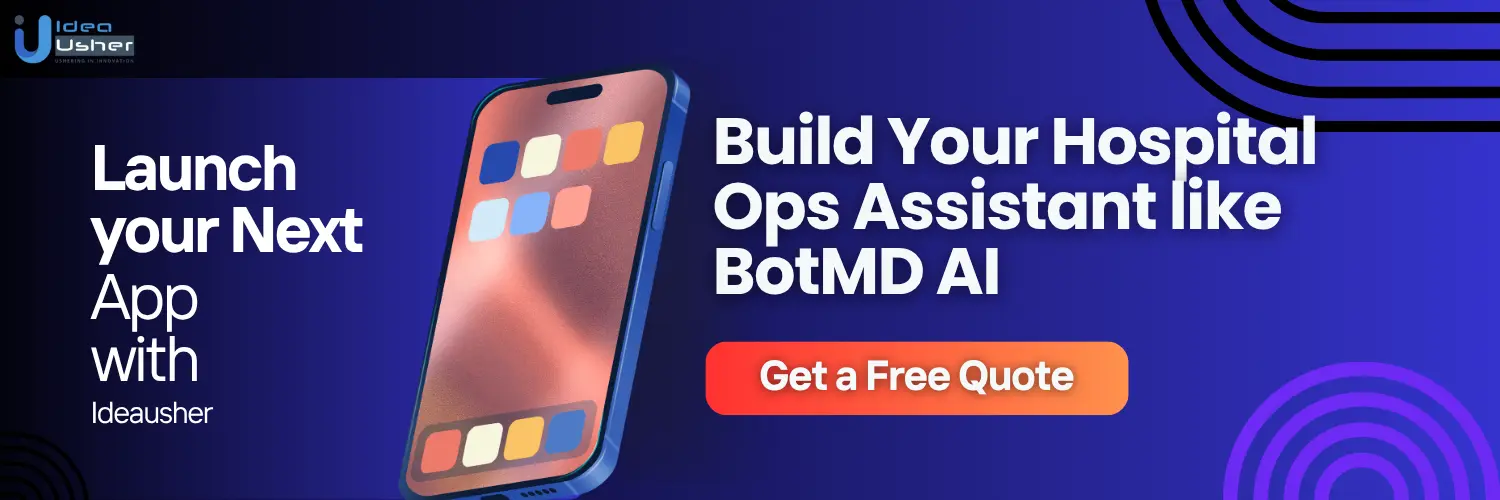
Essential Tools & APIs for Building an AI Hospital Ops Assistant
Building a secure, scalable, and efficient hospital operations assistant like BotMD requires the right mix of NLP engines, messaging APIs, integration standards, and robust security frameworks. Here’s a breakdown of the essential tools and how they help in healthcare AI development.
1. NLP & AI Engines: The Brain of Your Assistant
To ensure that your hospital assistant understands medical jargon, patient queries, and clinical context, choosing the right AI and NLP engines is crucial.
| Tool | Best For | Key Features |
| Google Dialogflow CX | Conversational AI for healthcare | HIPAA-compliant, multilingual support |
| Rasa Open Source | Custom, on-premise AI chatbots | Full control over data, privacy-focused |
| OpenAI API (GPT-4) | Complex medical Q&A and note summarization | High accuracy in answering complex medical queries |
| Azure Language Understanding (LUIS) | EHR-integrated clinical NLP | Seamless integration with Microsoft’s healthcare cloud |
Pro Tip: Fine-tune models using medical datasets like MIMIC-III and PubMed for better accuracy. Specialized medical NLP tasks can benefit from BioBERT or ClinicalBERT.
2. Messaging APIs: Reach Patients Where They Are
Since BotMD focuses on app-less engagement, it’s essential to integrate with popular messaging platforms to reach patients easily.
Top APIs for Patient Communication:
| API | Use Case | Compliance |
| WhatsApp Business API | Appointment reminders, follow-ups | GDPR-compliant |
| Twilio (SMS/MMS) | SMS alerts, OTPs for telehealth | HIPAA-compliant |
| Telegram Bot API | Secure, encrypted patient chats | End-to-end encryption |
| Apple Business Chat | Rich messaging with EHR integration for iOS users | HIPAA-compliant |
Key Consideration: WhatsApp and SMS are used by around 90% of patients, making them ideal choices for broad engagement without needing an app.
3. Integration Standards: Connect with EMRs & Legacy Systems
Hospitals often run on outdated EMR systems, so seamless integration is essential for any AI solution.
Healthcare Interoperability Standards:
- HL7 v2: Ideal for integrating legacy hospital systems like lab results and ADT messages.
- FHIR (Fast Healthcare Interoperability Resources): Modern API-based connections for patient records and scheduling.
- SMART on FHIR: Securely integrates third-party apps like AI into EMRs like Epic and Cerner.
- CDA (Clinical Document Architecture): Essential for structured clinical notes such as discharge summaries.
Implementation Tip: If hospitals lack FHIR APIs, using middleware tools like Redox Engine or Mirth Connect can help bridge the gap.
4. Backend & Hosting: Scalable and Secure Infrastructure
Your AI assistant needs to handle thousands of concurrent requests while maintaining security and compliance.
Recommended Backend Stack:
- Backend Language: Python (FastAPI/Django) or Node.js—both offer rapid development and strong NLP libraries.
- Serverless Compute: AWS Lambda or Google Cloud Functions—auto-scaling and pay-per-use, keeping costs in check.
- Database: MongoDB (NoSQL) or PostgreSQL (SQL)—ideal for handling both structured and unstructured data.
- Caching: Redis—speeds up frequent queries like drug interactions.
Pro Tip: AWS HealthLake and Google Healthcare API simplify the storage and management of Protected Health Information (PHI).
5. Security Frameworks: Non-Negotiable for Healthcare
Security is critical in healthcare; a single data breach can result in hefty fines and significant damage to reputation.
Must-Have Security Layers:
| Security Layer | Technology | Purpose |
| Authentication | OAuth 2.0, OpenID Connect | Ensure secure login for doctors and patients |
| Encryption | TLS 1.3 (in transit), AES-256 (at rest) | Safeguard PHI during data exchange and storage |
| Audit Logs | AWS CloudTrail, ELK Stack | Track all AI interactions to monitor access and identify potential threats |
| Access Control | RBAC (Role-Based Access Control) | Limit access based on user roles (e.g., doctors, nurses) |
Compliance Checklist:
- HIPAA (US), GDPR (EU), PDPA (Singapore) compliance
- SOC 2 Type II certification for cloud hosting
- Conduct penetration testing before launching the app to ensure vulnerabilities are addressed.
Use Case: AI Assistant for Hospital Discharge Workflow
One of our clients, a large multispecialty hospital in Southeast Asia, came to us with a pressing issue: bottlenecks in the patient discharge process. Here’s how we worked together to solve it.
The Challenge: Bottlenecks in Patient Discharge
The hospital was facing significant delays in patient discharge due to a few key issues: doctors were spending over 20 minutes per patient on manual discharge summaries, nurses were overwhelmed with delayed and inconsistent post-discharge instructions, and many patients missed follow-up appointments because of unclear verbal instructions about their recovery plans
As a result, the hospital was dealing with:
- Bed shortages, leading to delayed admissions.
- Frustrated staff, experiencing burnout from repetitive paperwork tasks.
- Lower patient satisfaction, as patients were confused about their recovery plans.
The Solution: AI-Driven Discharge Workflow Automation
To solve this, we introduced a conversational AI assistant that automated the discharge process from start to finish.
Automated Doctor Discharge Orders
The AI listens to doctor-patient conversations and uses voice-to-text technology to convert them into discharge summaries, ensuring clinical accuracy with OpenAI GPT-4. Smart templates then pull relevant data from the hospital’s EHR system, such as medications and follow-up dates, automating the entire summary creation process.
Nurse Task Automation
The AI sends real-time alerts to nurses about pending discharge tasks, such as removing IV lines or conducting final vital checks. Additionally, it auto-fills discharge forms in the EMR, reducing the time nurses spend on documentation by 50%, allowing them to focus more on patient care.
WhatsApp-Patient Engagement
Patients receive multilingual discharge instructions via WhatsApp, so they don’t need to download a new app. These instructions include:
- Medication schedules with visual pill reminders.
- Follow-up appointment details, with a one-click option to reschedule.
- Recovery tips, such as wound care videos.
Patients can also ask questions through the two-way chat, like “Can I shower after surgery?”
The Results: Faster, Smarter Discharges
| Metric | Before AI | After AI | Improvement |
| Discharge Processing Time | 90 mins | 54 mins | 40% faster |
| Nurse Time per Discharge | 25 mins | 10 mins | 60% productivity boost |
| Patient Satisfaction (Post-Discharge) | 68% | 89% | 21-point increase |
| Readmission Rate (30-day) | 12% | 8% | 33% reduction |
Key Benefits
- Faster bed turnover → Increased hospital revenue.
- Happier staff → Reduced burnout from repetitive tasks and paperwork.
- Better compliance → Patients followed their recovery plans more accurately, improving outcomes.
By automating the discharge process with AI, we helped the hospital improve efficiency, reduce delays, and enhance patient satisfaction, all while supporting their staff and boosting overall performance.
Conclusion
In 2025, building a BotMD-like AI assistant is a strategic move for hospitals and healthcare platforms looking to drive operational efficiency, enhance care quality, and achieve cost savings. With the right AI tools and trusted integration partners like us at Idea Usher, healthcare enterprises can confidently lead the way in digital transformation, improving patient experiences and optimizing workflows for a more sustainable future.
Looking to Develop a Hospital Ops Assistant like BotMD AI?
At Idea Usher, we specialize in helping hospitals deploy tailored, AI-driven Hospital Ops Assistants, just like BotMD, to streamline your workflows, reduce operational costs, and elevate patient care. We work closely with you to create a solution that fits your unique needs, ensuring smoother processes and better outcomes for both your staff and patients.
Why Choose Us?
- 500,000+ Hours of Coding Expertise – Our team of ex-FAANG/MAANG engineers builds scalable, secure, and HIPAA-compliant AI solutions.
- Proven Healthcare AI Solutions – From WhatsApp-powered patient engagement to EHR-integrated clinical bots, we have hands-on experience in transforming healthcare operations.
- Faster, Smarter Hospitals – We help you cut administrative time by 40%, reduce no-shows by 30%, and improve overall staff productivity.
Check out our latest projects and see how we’ve transformed healthcare operations with AI!
Work with Ex-MAANG developers to build next-gen apps schedule your consultation now
FAQs
A1: Hospital ops assistants are far more advanced than regular chatbots. They integrate seamlessly with backend systems, allowing them to access real-time patient data and be trained on clinical workflows. This makes them context-aware and able to take actionable steps, unlike static chatbots that only provide basic responses to predefined queries.
A2: Absolutely! Messaging-first integrations using platforms like WhatsApp Business API or Twilio allow the assistant to be deployed without requiring a dedicated app. This makes it easy to reach patients through widely-used channels, simplifying communication and engagement.
A3: Patient data security is a top priority. We ensure that data is encrypted in transit and at rest, and all communications follow strict HIPAA and GDPR compliance standards. With secure APIs and robust encryption, your data is protected throughout the process.
A4: Yes, the AI assistant is built with scalability in mind. It can support multiple hospitals or departments, allowing each to have custom workflows while maintaining centralized management. This flexibility ensures that each unit gets a tailored solution while benefiting from shared resources.
